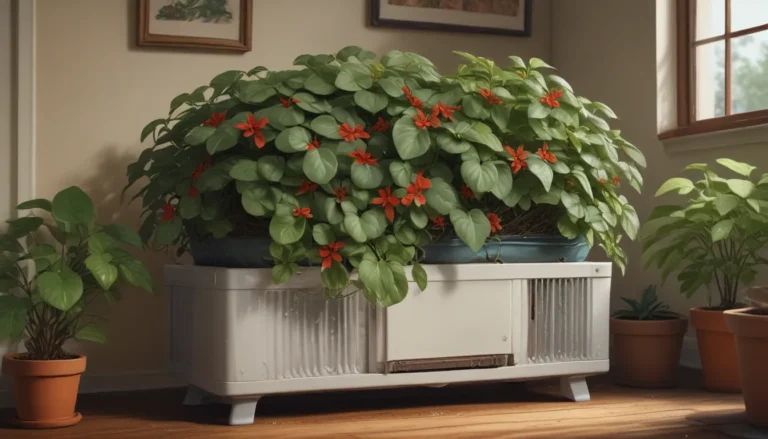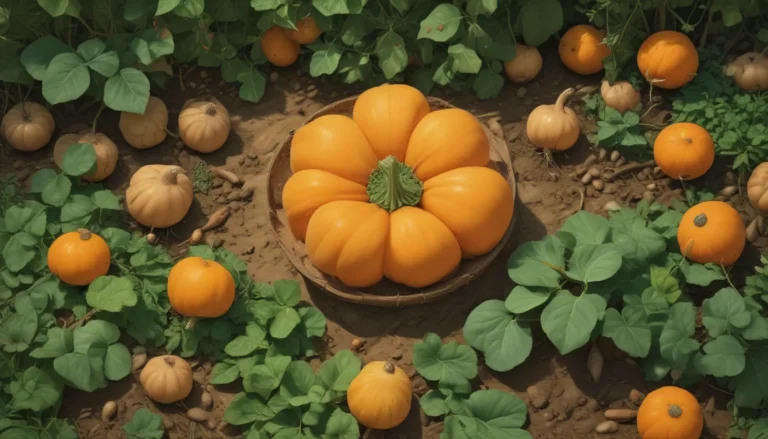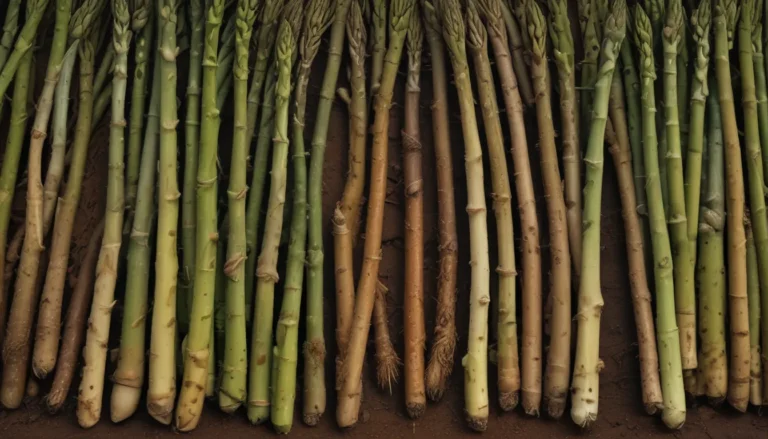An In-Depth Guide to Planting and Growing Pigeon Peas

Do you live in a warm climate and are looking for a new vegetable to add to your garden? Pigeon peas, scientifically known as Cajanus cajan, might just be the perfect addition.
These versatile legumes have been around for thousands of years, originating in India and now widely grown in tropical regions, including the West Indies. They are also known by various names such as Congo peas, no-eye peas, red gram, dhal, and gandules.
But what makes pigeon peas so special? Let’s dive into the details and explore how you can plant and grow these beneficial vegetables in your garden.
What Are Pigeon Peas?
Pigeon peas are often referred to as the “perfect 21st-century crop” due to their versatility and resilience. These legumes are not only a great source of food for both humans and animals but also offer several benefits to the garden.
Here are some key attributes of pigeon peas:
- They produce an abundant crop of edible seeds that can be consumed fresh or dried for later use.
- Pigeon peas fix nitrogen in the soil, making them beneficial for other crops.
- They attract beneficial insects with their flowers, promoting biodiversity in the garden.
- The plants have sizable taproots that help break up compacted soil.
- Pigeon peas are known for their nutty flavor and high protein content, making them a valuable addition to various recipes.
Whether you’re looking to grow them for food, mulch, or as a cover crop, pigeon peas offer a range of possibilities for gardeners.
How to Grow Pigeon Peas
Propagation
When it comes to planting pigeon peas, you have the option to start them indoors or direct sow them into the garden. While starting them indoors can be beneficial in areas with short growing seasons, direct sowing is preferred to minimize transplant shock.
Here are some tips for successful propagation:
- Pigeon peas are not picky about soil but prefer a pH ranging from 5.0 to 7.0.
- Plant the seeds an inch deep, spacing them three to four inches apart.
- Thin the seedlings to allow for proper spacing once they have two sets of true leaves.
Whether you’re growing pigeon peas as annuals or perennials, proper propagation is crucial for healthy plant growth.
How to Grow
Pigeon peas are known for their resilience in challenging conditions, including drought, poor soil, and heat. However, for optimal growth and yield, consider the following tips:
- Plant pigeon peas in full sun and well-draining soil.
- Weed the area thoroughly to prevent competition with the plants.
- Prune the stems to increase productivity but avoid cutting too severely.
While pigeon peas can withstand various growing conditions, providing them with adequate care will help them thrive and produce a bountiful harvest.
Harvesting and Storage
Harvesting pigeon peas is a straightforward process, whether you’re picking them fresh for immediate consumption or waiting for them to dry for storage. Here’s how you can harvest and store pigeon peas effectively:
- Fresh green peas can be picked once the plants start forming flowers.
- Store fresh peas in the refrigerator before shelling or shell them and store them for up to a week.
- Allow dried peas to dry completely before storing them in an airtight container for up to two years.
Proper harvesting and storage techniques will ensure that you can enjoy pigeon peas year-round in your favorite recipes.
Managing Pests and Disease
While pigeon peas are relatively resilient to pests and diseases, there are a few common issues to watch out for. Here are some pests and diseases that may affect pigeon peas:
Pests
- Armyworms: Look for holes in the leaves and pockmarks on the pods.
- Cutworms: These larvae can cut the stems of seedlings at the soil level.
- Thrips: These tiny insects can damage leaves and eventually destroy plants.
Integrated pest management practices can help control these pests and prevent infestations in your garden.
Diseases
- Anthracnose: Avoid planting pigeon peas in the same spot for consecutive years to prevent this fungal disease.
- White Mold: Rotate crops and avoid planting pigeon peas near other susceptible plants to reduce the risk of white mold.
By practicing proper crop rotation and sanitation measures, you can minimize the spread of diseases in your pigeon pea plants.
Incorporating these tips and techniques into your gardening practices will help you plant and grow pigeon peas successfully. Whether you’re a seasoned gardener or new to growing legumes, pigeon peas are a versatile and valuable addition to any garden. With their resilience, nutritional benefits, and culinary uses, these legumes offer a range of possibilities for home gardeners. So why not give pigeon peas a try in your garden this season?
Recipes and Cooking Ideas
Pigeon peas can be used in a variety of dishes, from soups and stews to salads and side dishes. Here are some cooking ideas to inspire you:
- Steam fresh peas or add them to vegetable soups.
- Use dried peas in soups, curries, or rice dishes.
- Freeze cooked pigeon peas for quick and easy meals on busy days.
These legumes are versatile and can be incorporated into a wide range of recipes to suit your taste preferences. Experiment with different cooking methods and flavor combinations to discover new ways to enjoy pigeon peas in your meals.
Final Thoughts
Pigeon peas are more than just a nutritious vegetable; they are a valuable addition to any garden. Whether you’re growing them for food, soil improvement, or biodiversity, pigeon peas offer numerous benefits for home gardeners. With proper care and attention, you can successfully plant and grow pigeon peas in your garden, enjoying a bountiful harvest of these nutrient-rich legumes. So why not add pigeon peas to your garden this season and experience the many rewards they have to offer?
We hope this guide has inspired you to explore pigeon peas and make them a part of your gardening journey. If you have any questions or insights to share about growing pigeon peas, feel free to join the conversation in the comments below. Happy gardening!
Remember, with their resilience, nutritional benefits, and culinary uses, pigeon peas offer a range of possibilities for home gardeners.
So why not give pigeon peas a try in your garden this season?
# Plant and Grow Pigeon Peas: A Comprehensive Guide





